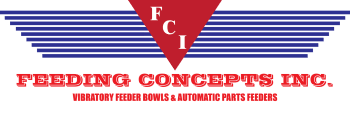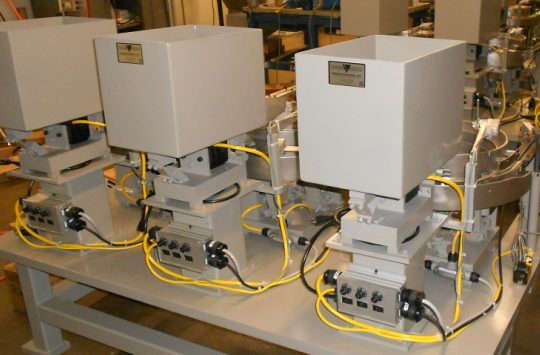Under certain circumstances a part must feed to an extended distance away from the bowl center. The typical vibratory inline can only support about 8-12” of overhang off the plate before it becomes sporadic. Conveyors can only go so far but the transition and costs can get complicated. There is an alternative solution to these problems. That fix would be implementing an air-track in place.
FCI Air-Track systems typically consist of a blower system with flexible air tubing. This tubing connects at the back of the track and provides a consistent flow of air down the main channel of the track frame. The track frame usually consists of steel or stainless-steel tubing equipped with angled holes so the air escapes in the direction of feed. This design allows for a linear motion without adjusting flexible air-jets or air-knifes. It is a fixed setup that is consistent and efficient.
Air-Tracks have several pros, one being that they can be machined at very long lengths. Machine builders and integrators love this because it allows us to supply a track that is capable of running through their machine enclosure to an area of interest such as a pick and place mechanism or rotary actuator. No electronics exist on an air track except for the full track switch sensor and the blower system. Everything else runs off the air flow produced. This air flow can produce a very high feed rate per minute which is also why many of our customers elect to choose this type of system over a standard vibratory inline or conveyor.
If you think this type of system could be used on your next project, please reach out to us and a member of our team can provide some insights.


